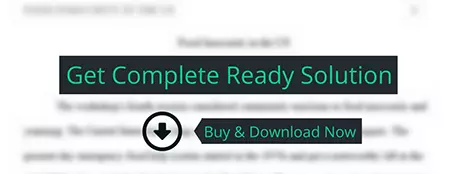The international fashion conglomerate, iFashion, is a market leader in the European fashion business and owns many well-known brands. iFashion operates on both the wholesale and retail markets, and most of the production is outsourced to partners in Asia
computer science
Description
Background
The international fashion conglomerate, iFashion, is a market leader in the European fashion business and owns many well-known brands. iFashion operates on both the wholesale and retail markets, and most of the production is outsourced to partners in Asia and southern Europe. The most successful brands are: Fnike, Bad Mode, Power and Clothes & Bones. All of the brands except Power (male brand) primarily target women in the age group 15-40. Most of the designs for the various brands happen in the iFashion HQ in Aarhus, Denmark. The HQ also houses the central functions for Finance, Marketing, Logistics, HR and IT. iFashion has around 30 regional sales offices in most European countries and also in USA and Brazil. Logistics centers are placed in New York, Rio, London, Paris, Madrid, Berlin, Milano, Amsterdam and Vejle. The company has over 5.000 retail stores across Europe, South America and USA. Approx. 2.000 of these stores are owned by iFashion and the rest are owned by franchisers or joint ventures with partners. Some of the larger stores sell multiple brands. The wholesale business sells to their own retail stores but also other retailers and e-commerce platforms. The core ERP system is called FashionERP and is a 15 years old platform custom built by the IT development team in iFashion. It is a web application running on an Oracle database and it is very expensive to maintain, due to many years of custom code and many developers over time. Around 7 years ago, iFashion invested in a SAP ERP system to be rolled out in Finance and HR departments. The original plan was to also replace the FashionERP system with SAP in the other department functions, but the project failed due to a host of reasons, and FashionERP had prolonged life for the core functions except Finance and HR. At the same time as the SAP ERP platform was implemented for Finance and HR, the IT department hired many external consultants to build a new SAP BI platform, thinking that all source data would in due time exist in the SAP ERP platform. After 4 years, the SAP BI platform was rolled out together with SAP ERP Finance and HR modules. It also had a data warehouse for the FashionERP data. However, the business users were not happy with the new SAP BI and Enterprise data warehouse delivered by the central BI department. Performance was bad, the reports were neither intuitive nor user friendly, and even simple new change requests took at least one month to implement. Furthermore, it was an unstable and expensive platform for the central BI department to operate. After a year on the SAP BI platform, many data shadow systems started to arise among the different brands and business users around the organisation. Some were just simple self-service BI reports in tools like Excel, Power BI and Tableau, but others were team BI solutions utilizing spread-marts, SharePoint lists and Access databases. Soon, many users left the central BI platform - except the simple report users.





